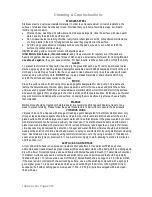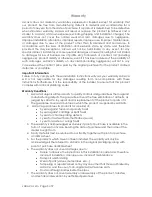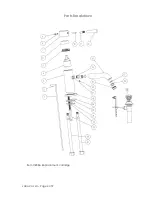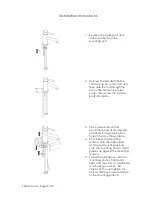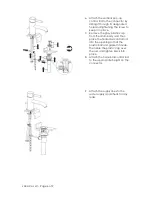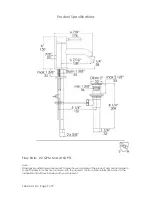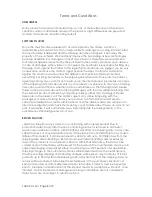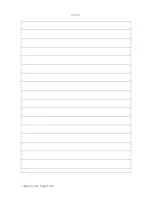
LACAVA LLC
®
Page 2 of 9
Cleaning & Care Instructions
STAINLESS STEEL
Stainless steel is a very wear-resistant material. In order to achieve maximum corrosion resistance, the
surface of stainless steel must be kept clean. Provided that you follow a few simple steps, it will last a
lifetime in good condition.
•
After each use, wash the sink with water and mild soap detergents; rinse the surface with clean warm
water; and dry the sink with a soft dry cloth.
•
Do not leave liquids containing chlorine, rusty items, toilet cleaners, acids, concentrated disinfectants,
or strong alkalis in the sink for long periods because they may discolor the surface.
•
AVOID using coarse abrasive materials such as scouring pads, wire wool, etc. which scratch the
surface of polished stainless steel.
NEVER let strong acids come into contact with stainless steel.
Other Metals (like faucets, chrome brackets, etc.)
. Use pure water for regular care. If the parts are
heavily congested, dissolve a couple of drops of dish soap in a small amount of water for cleaning.
Do not
use abrasive agents
- they will cause scratches. For best results, rub the surface with a soft cloth until dry.
GLASS
To prevent the formation of deposits, rinse and dry the glass after each use. To remove permanent water
stains, apply any glass cleaning aids and detergents available and/or baking soda(apply directly with a soft
cloth and a couple drops of water), like the ones used to clean shower doors, rinse the surface with clean
water, and dry with soft dry cloth.
DO NOT
use coarse abrasive materials or sharp objects which may
scratch the surface and leave marks on the glass.
WOOD
Clean the surface with soft cloth using only cleaning agents designated for wood care. To preserve and
restore the natural beauty of wood, apply paste wax with a soft cloth once a week and polish the surface
until wax evenly spread. NEVER use course abrasive materials which will scratch and discolor the surface,
and avoid oily agents that can engage in chemical reactions with lacquered surface. Extensive use of water
may also discolor and damage the wood surface, so wiping the wood surface dry after each use is highly
recommended.
MARBLE
Marble stone should be treated with marble sealer (we recommend Stoneguard Sealer) at least once a
week to prevent staining. Please follow the sealer manufacturer’s instructions to assure the best results.
VITREOUS CHINA
Vitreous china can be cleaned with a range of cleaning agents designated for bathroom maintenance: only
strong acids and abrasive agents should be avoided in order to prevent discoloration and scratches in the
glazed surface. Wash with detergent and warm water and rinse. Black marks in the glaze created by contact
with metal elements can be removed with very fine steel wool. The marks should be damped with water or
glass cleaner and rubbed with steel wool until it is removed (this may take longer than a couple of minutes).
Lime deposits may be removed by a solution of vinegar and water. Bathroom fixtures should be disinfected
weekly with a solution of chlorine bleach and water or a spray-on disinfectant or by using disinfectant cleaning
foam. Rust stains can be removed by using commercial rust remover or by using a solution of 1 tablespoon
oxalic acid crystals (poison), dissolved in ½ cup warm water. Apply to stain, allowing to stand a few minutes,
and then rinse
well.
ACRYLIC & SOLID SURFACE
Acrylic and solid surface is non-porous so liquids cannot penetrate it. Use water with dish soap or an
ammonia-based cleanser (such as glass cleanser).Wipe away water stains with a damp cloth and sponge and
dry with a towel. Occasionally wipe sinks and bowls with diluted household bleach (1/1 water/bleach solution)
to disinfect. Surfaces exposed to acetone-based polish removers and paint removers should be promptly
flushed with water. To remove stains, use Soft Scrub(r) diluted bleach and a sponge to rub in circular motion.
If the area is dull in contrast with the surrounding surface, use a white polishing compound with a sponge to
get a higher gloss. To remover cuts and scratches, sand with 400-grit (30 micron) or 600-grit (20 micron)
sandpaper; buff with polishing pad at a low speed (1,500 - 2,000 rpm) polisher equipped with a wool pad;
finish with wax.


